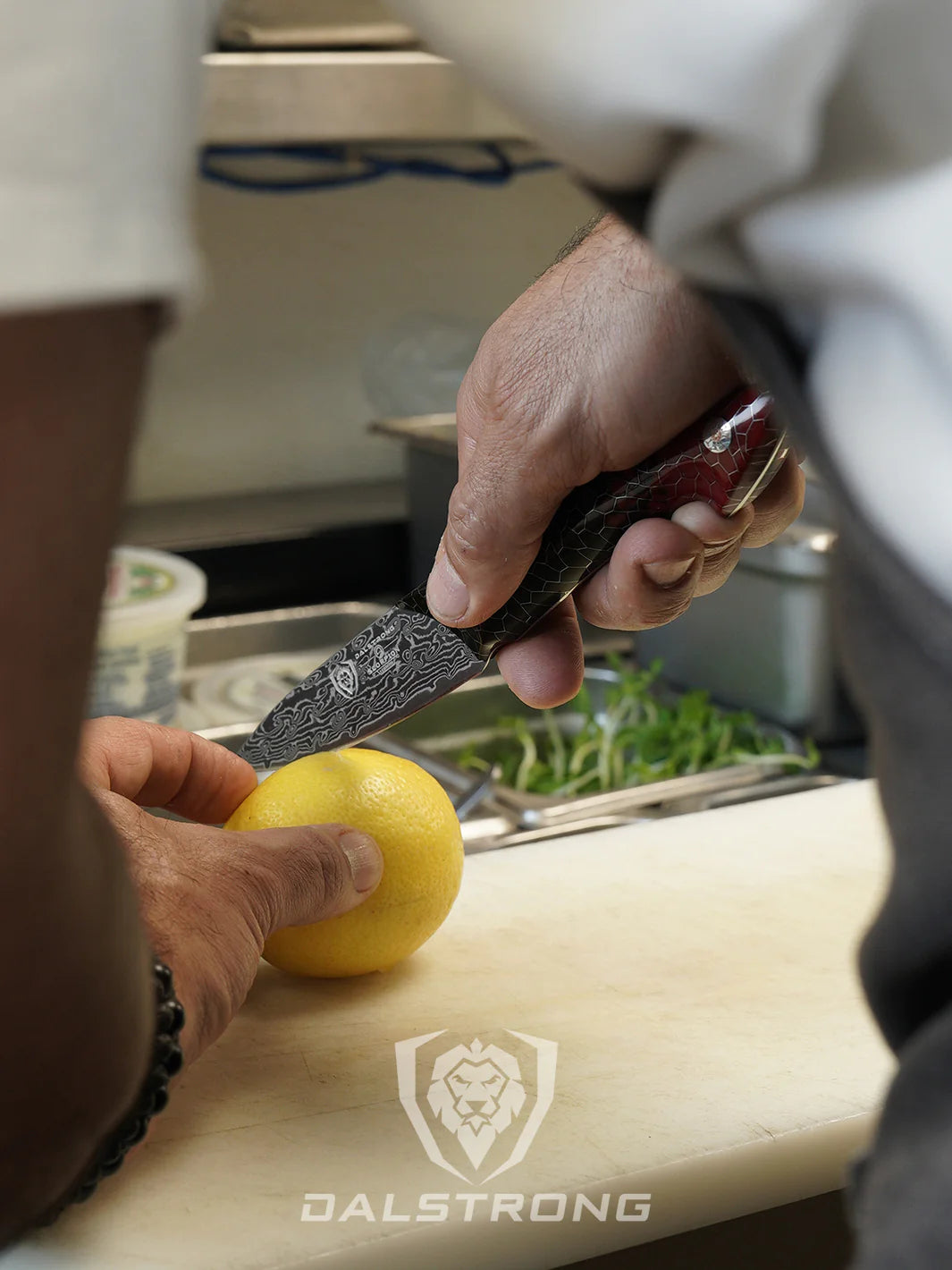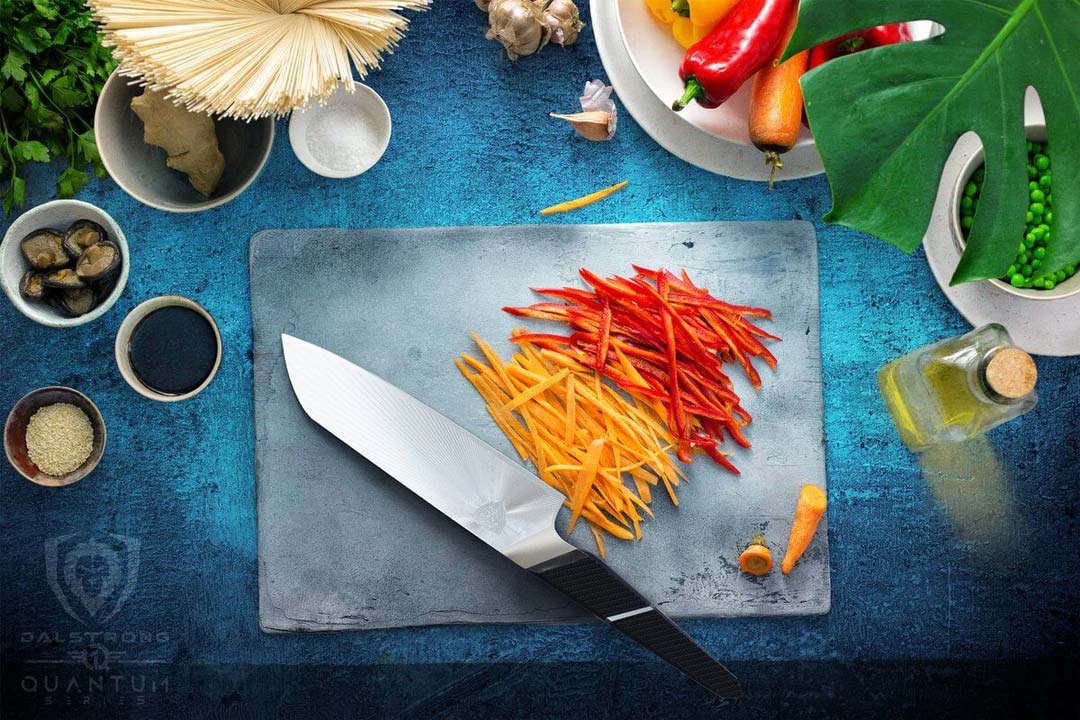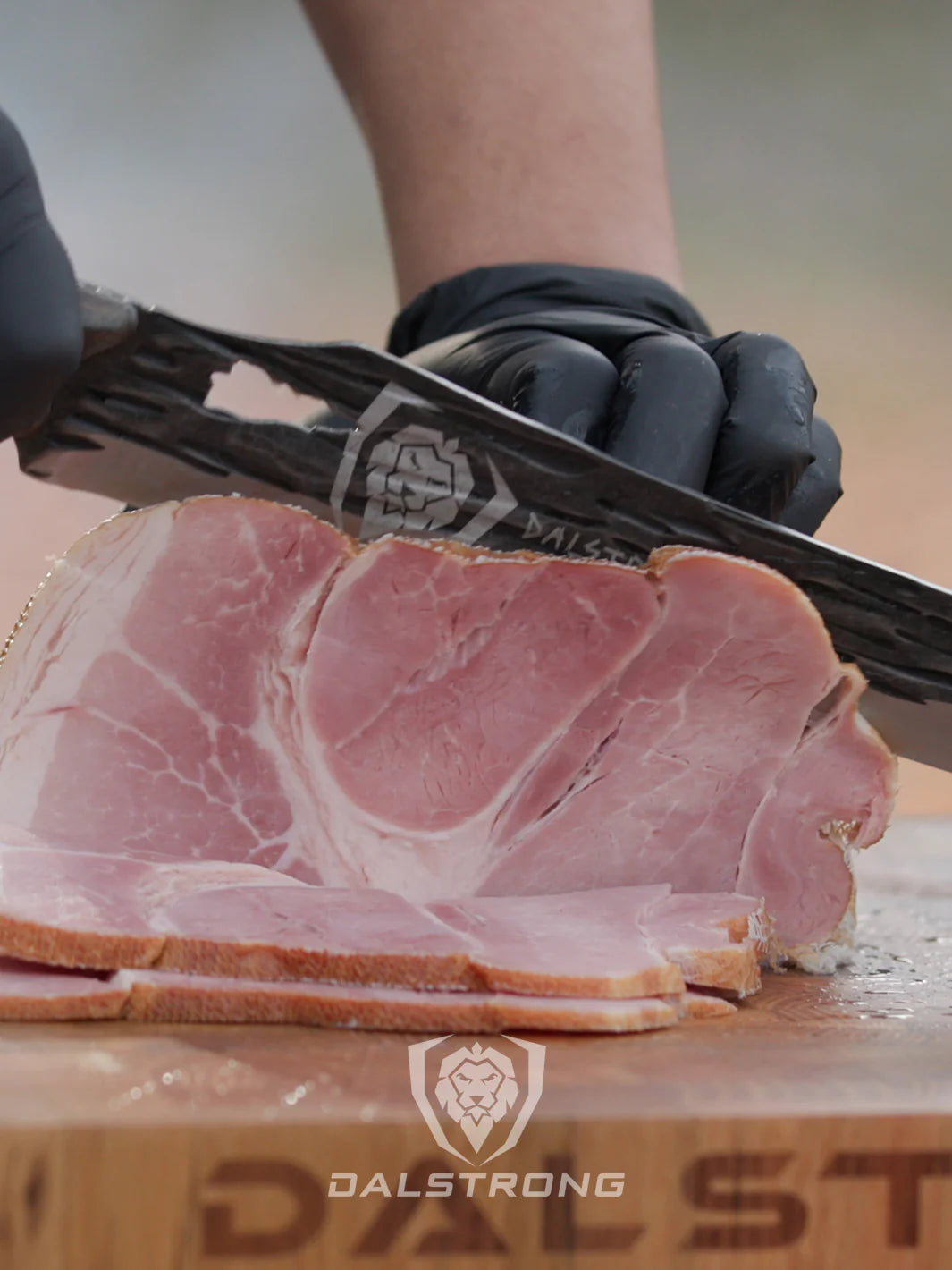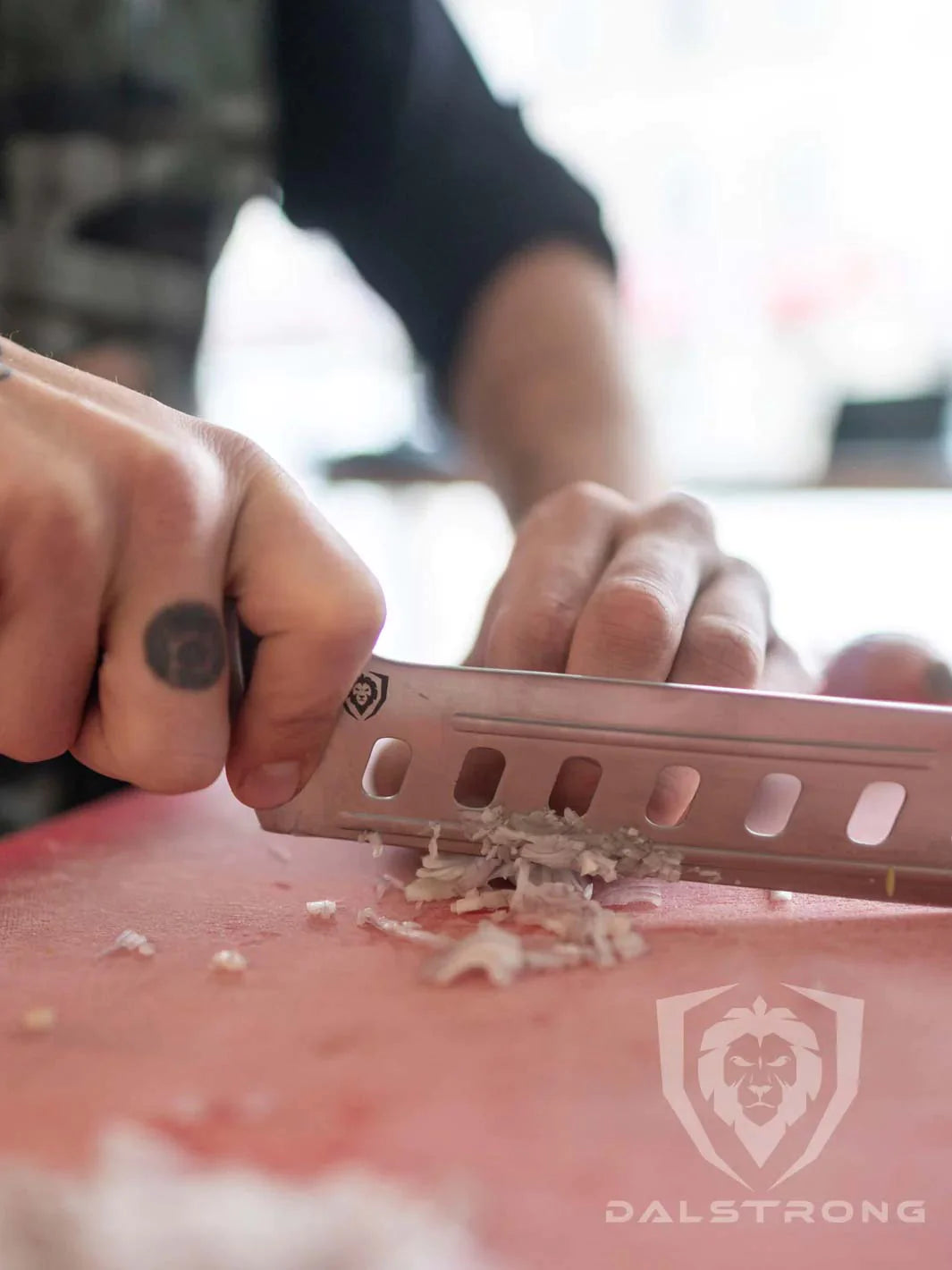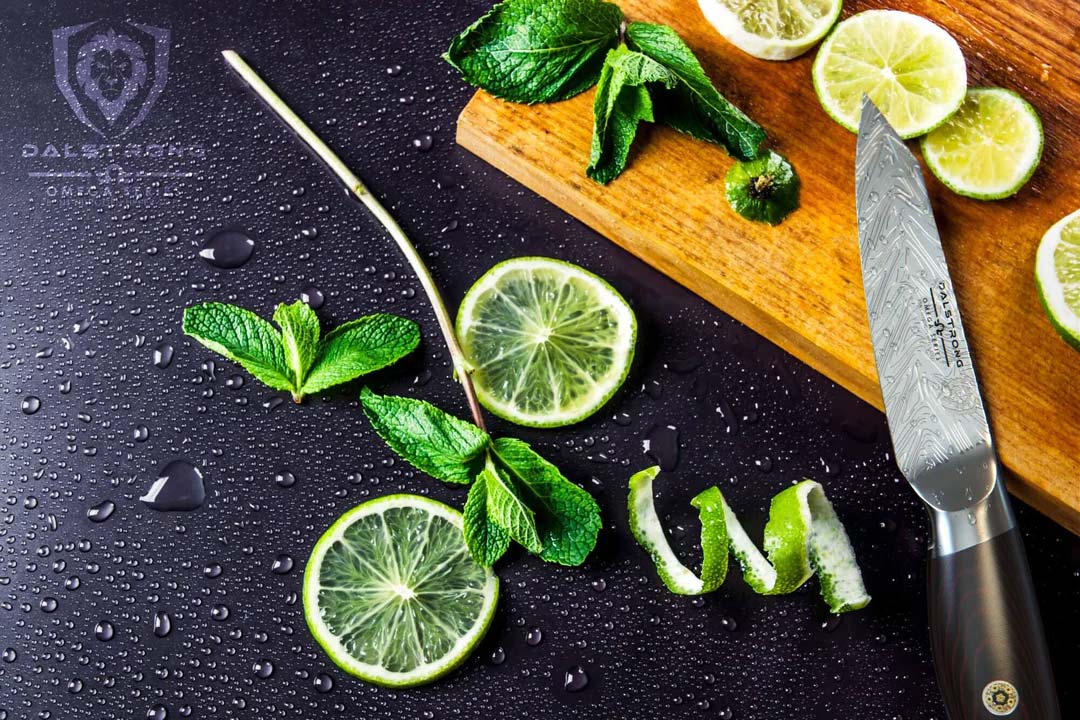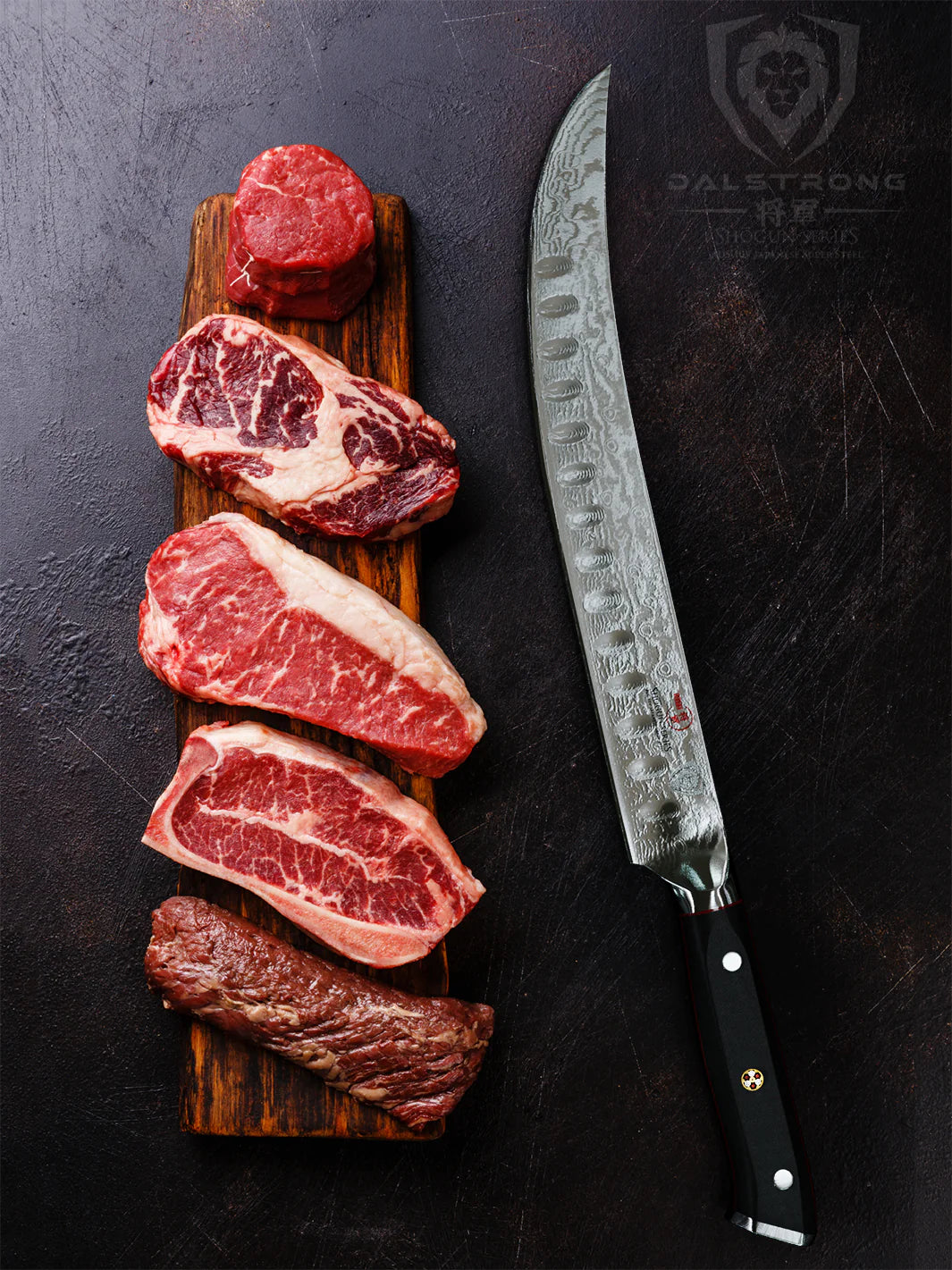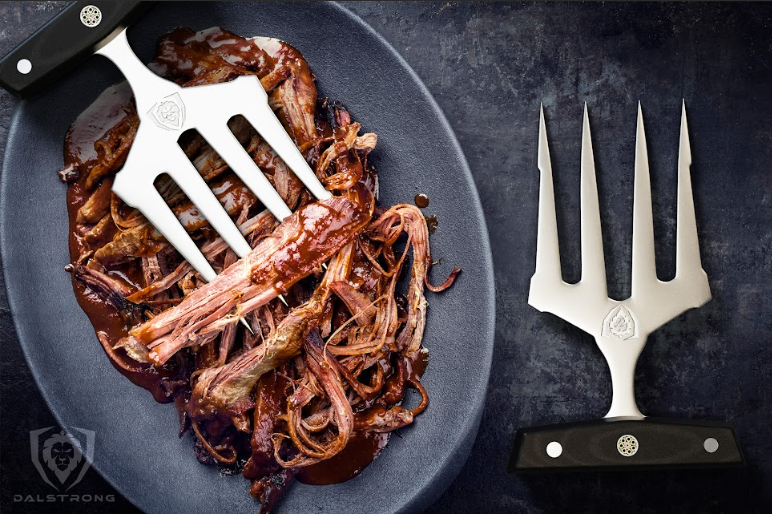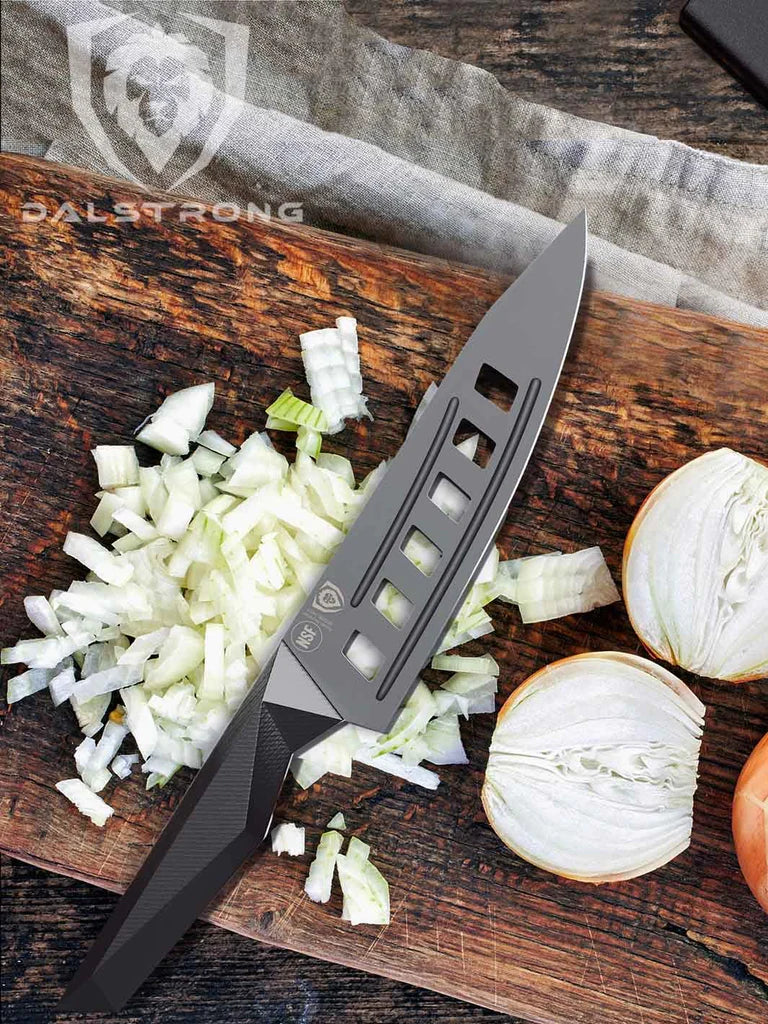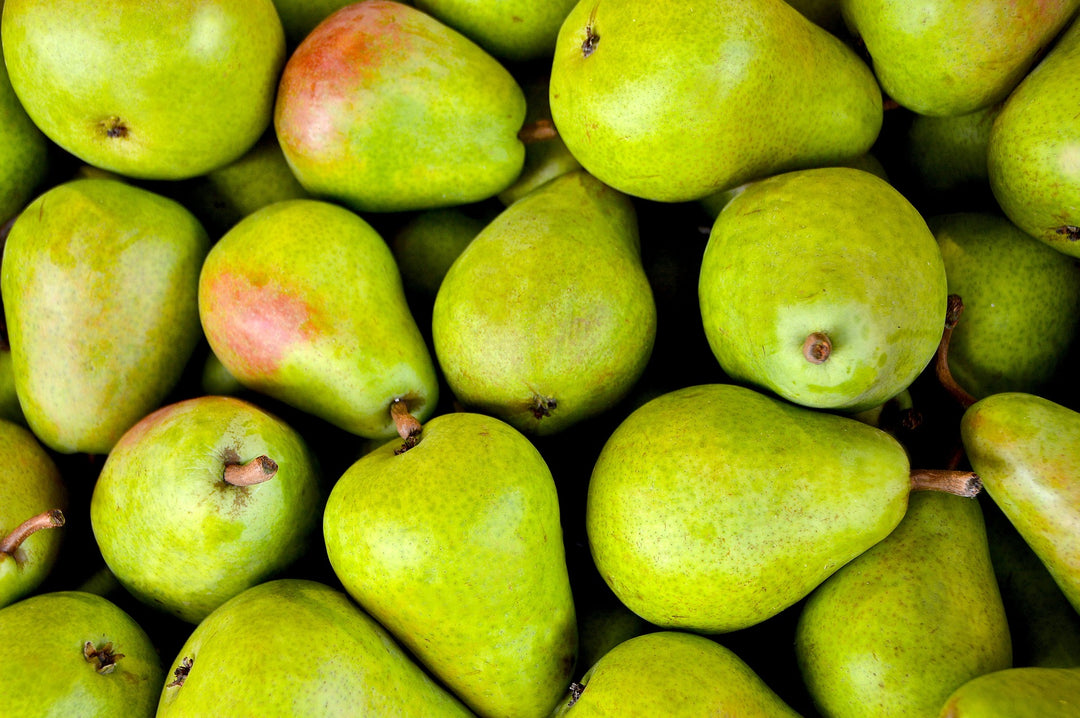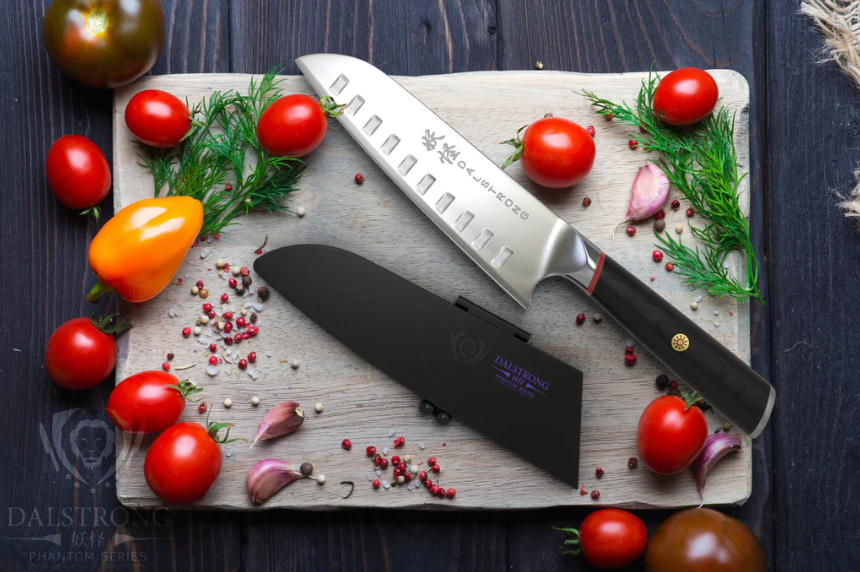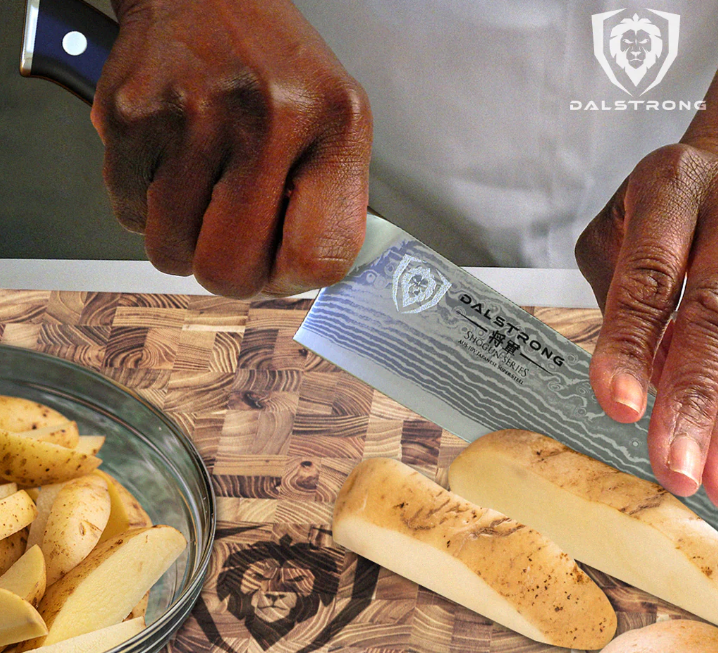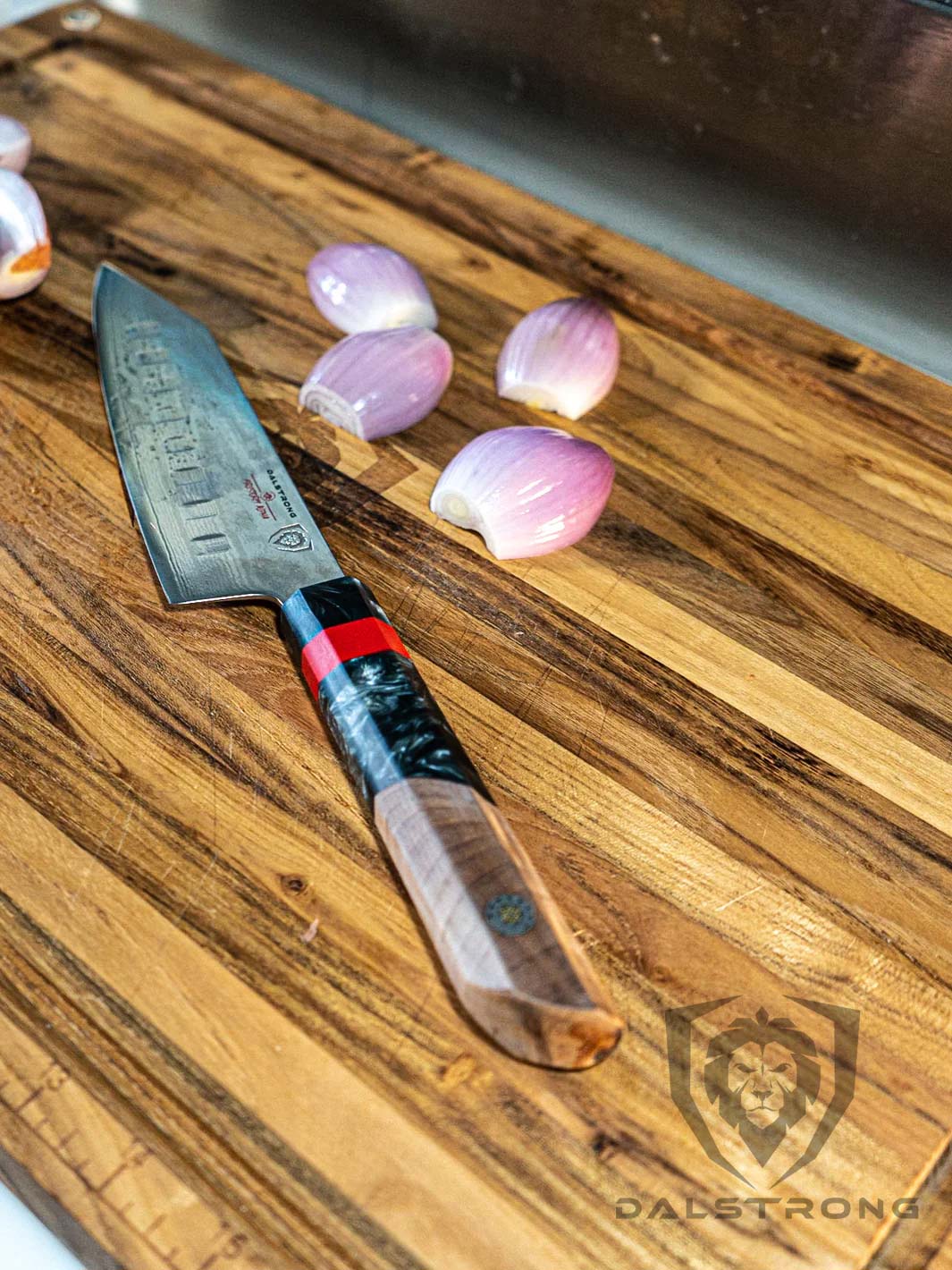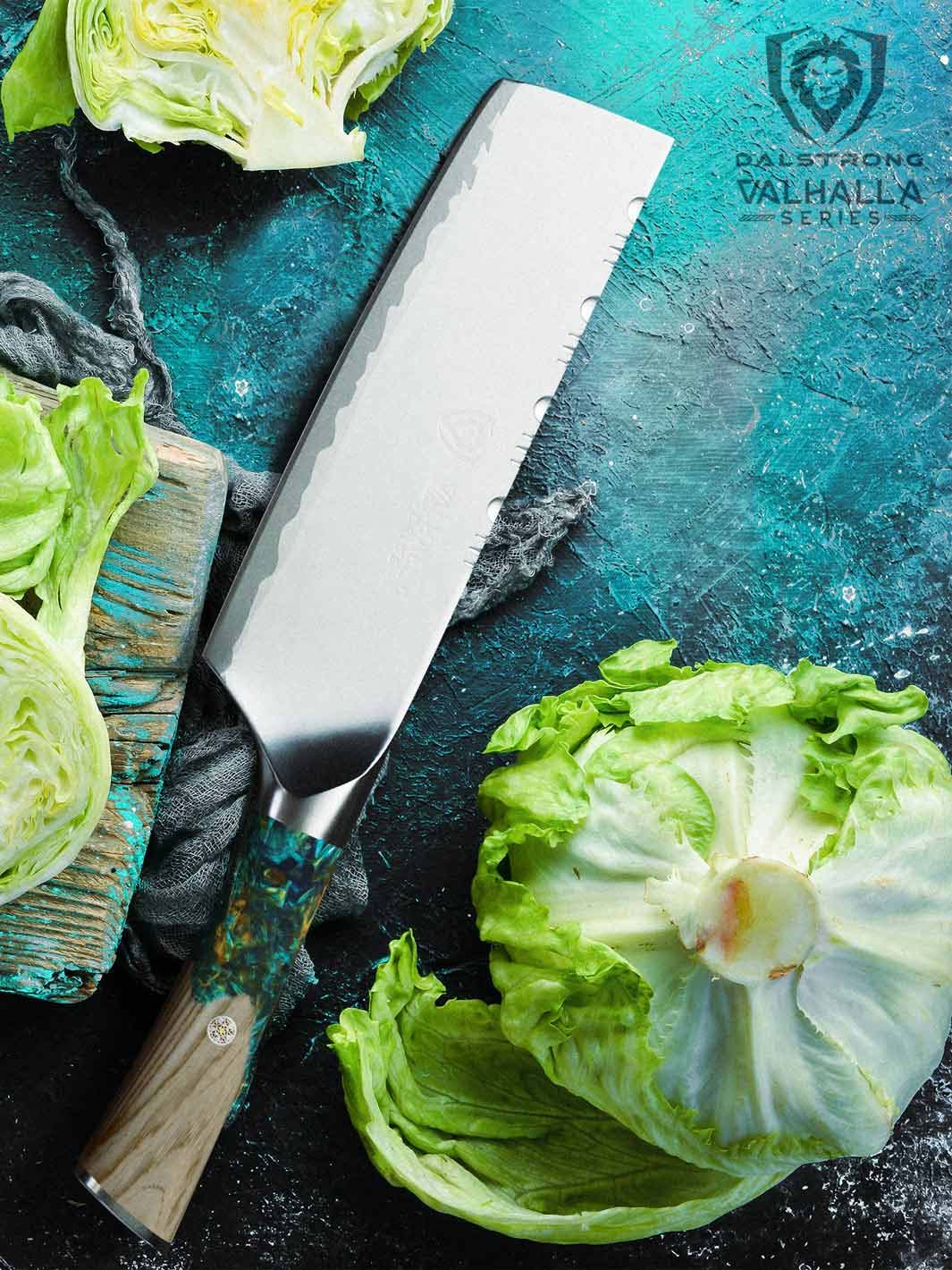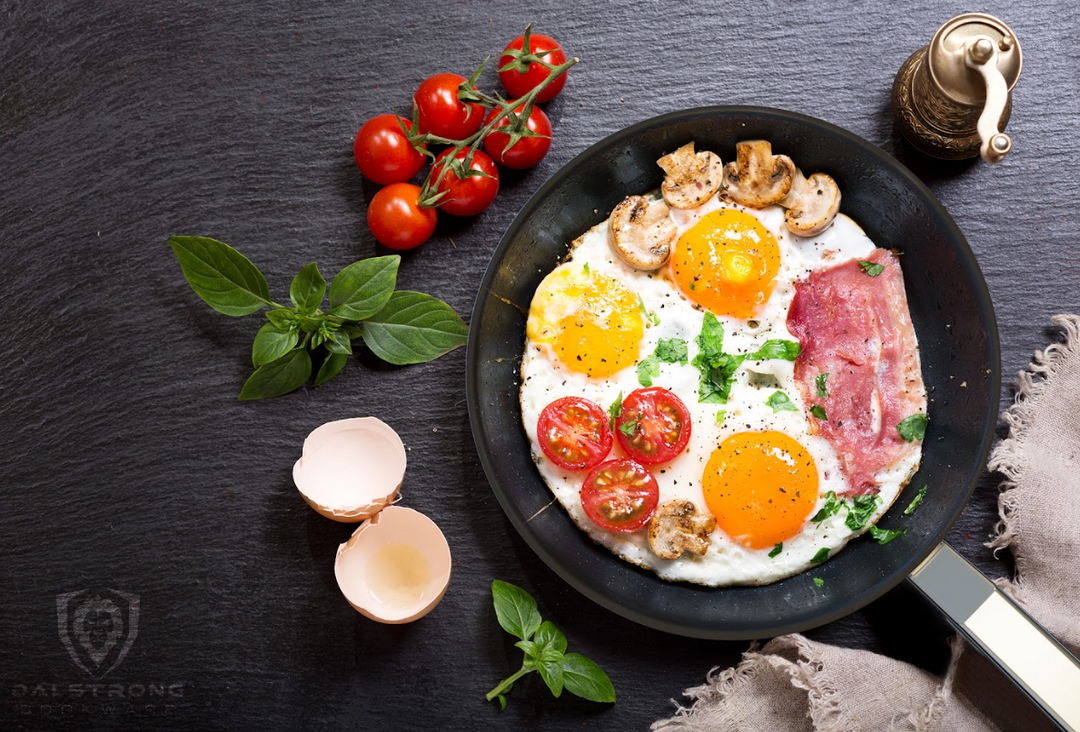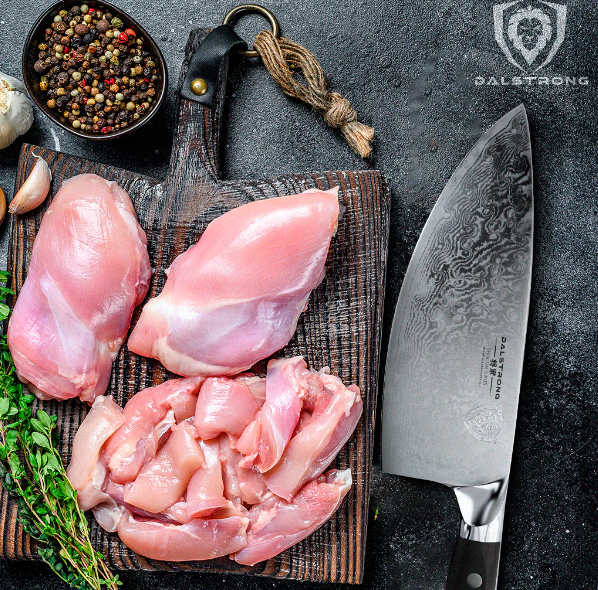How To Dice An Onion Without Breaking A Sweat
Omega Series Kitchen Knives | Dalstrong
Quick Overview: How To Dice An Onion
- Choose the right onion.
- Prepare your workstation.
- Cut off the ends and cut the onion in half upright.
- Peel off the outer of the onion and make horizontal cuts from the top to the root end, placing half flat-side down and leaving the root end intact.
- Once you've made horizontal cuts, hold the onion together and make vertical cuts from the top to the root end.
- Hold the onion half firmly and slice across the onion in a downward motion, creating small, uniform pieces.
- With time and repetition, you'll become more proficient and efficient in cut onions.
Choosing the right onion is the starting point to creating the most epic recipes! Whether it is achieving the flavour, texture, or taste, the large variety of onions out there will make the job tenfold easier for you. In this blog, I’ll be walking you through how you can select, cook, and dice an onion to perfection without breaking a sweat. So, folks, let’s get right into it!
Let’s start by talking about choosing the best onion.
1. How to Choose The Best Onion
 Crusader Series Kitchen Knives | Dalstrong
Crusader Series Kitchen Knives | Dalstrong
There are many different types of onions to choose from, but knowing how to select the best of the hundreds you see stacked together at your local grocery store can make the job seem daunting. But, it doesn’t have to be.
Yellow Onions
These are all-purpose onions with a strong, pungent flavour. They are best used when cooking methods a batch of soup, marinade, caramelize onions, sauce, or spread.
Red Onions
Red sliced onions have a milder and slightly sweet flavour compared to yellow onions. They are often used raw as they give salads that crisp and crunch along with a flavour that’s simply unbeatable and caramalize onions.
White Onions
White cut onions have a delicate flavour and are ideal for dishes like caramelize onions where a strong onion taste isn't desired. They work well in Mexican and Latin American cuisine.
Sweet Onions
Sweet sliced onions, such as Vidalia and Walla Walla onions, have a mild and sweet taste, making them ideal for eating raw in salads or on sandwiches and caramelize onions.
Selecting the Right Onion
When choosing an onion, follow these tips to ensure you pick the best one for your recipe:
Firmness
Look for onions that feel firm and heavy in your hand. Avoid onions that have soft spots, mold, or sprouts, as these indicate spoilage.
Dry Outer Skin
The outer skin of a good onion should be dry and papery. Avoid onions with damp or slimy skin, as this can be a sign of decay.
Size and Shape
Select cut onions that are uniform in shape and size for consistent cooking methods. Irregularly shaped onions may cook unevenly.
Aroma
Smell the onion before buying it. A fresh onion should have a mild, slightly sweet smell. If it smells overpowering or foul, it may be old or spoiled.
Seasonal Onions
Onions are available year-round, but their flavour and texture change constantly depending on the season. Generally, onions that are harvested towards the end of summer tend to be more pungent and stronger in smell and taste.
Storage
Right storage is vital to prolong the shelf life of onions and maintain their quality. Store onions in a dry, cool, and well-ventilated place, away from direct sunlight. Avoid storing them near potatoes, as potatoes release gases that can root onions to spoil faster.
Read about the nutritional facts and health effects on onions, here.
2. How to Dice An Onion Step-by-Step
Dicing onions is a fundamental culinary skill that can enhance the flavor and texture of countless dishes. Learning the proper technique for dicing onions can save you time in the kitchen and result in consistent, evenly-sized pieces. In this step-by-step guide, we'll walk you through the process of dicing onions like a pro.
- Prep Your Workstation: Before you start, gather all the necessary tools: a sharp chef's knife to cut, a cutting board, and a peeled or cut an onion. Ensure your cutting board is stable and won't slip while you work. A damp paper towels or a kitchen towel under the cutting board can help prevent slipping.
- Cut Off the Ends: Place the cut onion on the cutting board and slice off a small portion of the stem end, leaving the root end intact. This will make a flat surface, making it easier to stabilize the onion while dicing.
- Halve the Onion: Cut an onion in half upright, from the stem end to the root end. This will show the inner layers of the onion, making it easier to peel off the outer of an onion.
- Peel the Onion: Remove the papery outer skin from each cut. You can start peeling from the cut end or use your fingers to gently peel off the outer back of the skin from the root end.
- Make Horizontal Cuts: Place one onion half flat-side down on the cutting board. Hold and chop an onion firmly with one hand, and with the other hand, make horizontal cuts into the onion, leaving the root end intact. The closer the cuts are, the finer the dice will be.
- Make Vertical Cuts: Once you've made horizontal cuts, hold the onion together and make vertical cuts from the top to the root end. Again, the closer the cuts are, the smaller the dice will be.
- Dice the Onion: Hold the onion half firmly and slice across the onion in a downward motion, creating small, uniform pieces. Continue dicing until you reach the root end. For finer dice, make additional vertical and horizontal cuts.
- Practice Makes Perfect: Dicing an onion may take some practice, so don't be discouraged if your first attempts are not perfect. With time and repetition, you'll become more proficient and efficient in cutting onions.
Kitchen Tip
- Choosing the best onion for your recipes and mastering the art of dicing can significantly elevate your culinary skills. By selecting the right onion type and using proper dicing techniques, you can enhance the flavor and presentation of your dishes.
3. Recommended Dalstrong Tools You Can Use
1. Spartan Ghost Series | Dalstrong
Design
The sleek, thin, and lightweight design of the Spartan Ghost Series knives makes slicing through food effortless, almost like using a laser. This knife is a Dalstrong bestseller for all the right reasons. Whether you're a home cook or a professional chef, the Spartan Ghost Series will elevate your culinary skills to the next level.
Performance
Not only does the Spartan Ghost Series perform exceptionally, but it also looks stunningly beautiful. The two years of design perfection show in every line and curve, exuding power and elegance. The D-shaped handle fits perfectly in your hand, providing a non-slip grip that allows you to wield the blade with precision and confidence.
PROS:
- Precision-crafted with ultra-premium powdered S35VN steel for exceptional cutting power
- Signature black DLC Dalstrong LionArmor coating for enhanced durability and resistance to wear and tear, acids, and moisture, ensuring the blade remains tough and resilient in any situation
- Ultra-thin 1.5mm blade sharpened to 8-10 degrees per side for a laser-like edge, making slicing effortless
CONS:
- The thin blade may not be suitable for heavy-duty tasks like chopping dense vegetables or bones, but excels in precision slicing.
- Some users may prefer a more traditional knife handle shape, although the D-shape hybrid handle provides excellent grip in slippery conditions.
2. Shogun Series ELITE | Dalstrong
Introducing the Dalstrong Shogun Series ELITE 8” AUS-10V chef knife to cut, the epitome of supreme function and stunning elegance. This razor-sharp kitchen powerhouse boasts exceptional cutting prowess and versatility, making it the most indispensable kitchen blade. The super-steel core ensures scalpel-like sharpness and edge retention, while the G-10 Garolite handle offers unmatched durability and ergonomic control.
PROS:
- Scalpel-like sharpness at an impressive 8-12° degree angle per side, delivering precise and effortless cuts.
- Tapered bolster provides a perfect 'zero-balance' balance, and finger protection, and promotes a natural and comfortable pinch grip.
- The G-10 Garolite handle is highly impervious to heat, cold, and moisture, offering lifelong durability and a non-slip grip.
CONS:
- The 8-12° degree angle per side may require some adjustment for users accustomed to wider blade angles, but it ensures exceptional sharpness.
- The exquisite Shogun Series Tsunami Rose blade pattern might be a matter of preference for those seeking a more minimalistic design, but it adds striking beauty to the knife to cut.
3. Chef's Knife 8" Valhalla Series | Dalstrong
Introducing the Valhalla 8" chef knife to cut from Dalstrong, a blade worthy of courageous warriors seeking glory in the kitchen. Crafted with a 5-layer stainless steel blade honed to a razor-sharp 8-12 degrees, this knife embodies strength and agility for conquering any culinary challenge. With a 60+ Rockwell Hardness, it channels the might of the gods, making mincing, slicing, chopping, and disjointing a triumphant experience.
PROS:
- Precision forged, ultra-sharp 5-layer stainless steel blade with a 60+ Rockwell Hardness for exceptional cutting performance.
- Structurally sturdy and impact-resistant celestial resin handle, providing a comfortable and secure grip during vigorous use.
- Superior scratch-resistant material maintains a polished, glossy finish, keeping the knife looking elegant and refined.
CONS:
- The 8-12° per side edge may require some adaptation for users accustomed to wider blade angles, but it results in a razor-sharp cutting experience.
- The celestial resin handle design may be a matter of preference for those seeking a different aesthetic, but it provides excellent grip and durability.
4. Santoku Knife 7" Frost Fire Series | NSF Certified | Dalstrong
Introducing the Frost Fire Santoku knife, living up to its name with triple-threat versatility in slicing, dicing, and mincing. Built with 7-layer high-carbon, high-chromium 10CR15MOV steel and expert heat treatment, this knife enchants with its beauty, comfort, and astoundingly sharp razor edge. The sandblast finish adds a unique "frosted" look, enhancing non-stick properties.
PROS:
- 7-layer high-carbon, high-chromium 10CR15MOV steel with added cobalt and expert heat treatment ensures exceptional sharpness and edge retention.
- Sandblast finish provides a unique "frosted" look and enhances non-stick properties for effortless food release.
- Slender, ergonomic white resin handle with aluminum mesh design offers a tension-free grip and superior hand control.
- Lightweight construction provides agility and comfort during extended use.
CONS:
- The 16-18° per side edge angle may require some adjustment for users accustomed to wider angles, but it offers excellent sharpness for precision tasks.
- The honeycomb finish on the handle may be a matter of preference for those seeking a different design, but it surely adds style and grip.
5. Santoku Knife 7" Shadow Black Series | RED Edition
Introducing the Dalstrong Shadow Black Series Marauder Edition 7" Santoku knife, the ultimate bold blade that will transform your daily meal prep routine. With its versatile slicing, dicing, and mincing capabilities, this knife can do everything a traditional chef's knife can, but with a unique look and feel that will leave everyone impressed.
PROS:
- Precision forged, ultra-sharp 7CR17MOV-X vacuum-treated steel at 58 Rockwell provides excellent cutting performance and edge retention.
- The tapered blade design and divots create frictionless slicing power, enhancing its maneuverability and versatility.
- The menacing blood-red non-stick coating not only adds to its unique look but also improves robustness and corrosion resistance.
CONS:
- The deep, blood-red colour may be a matter of preference for some users, but it adds to the knife's bold and unique appearance.
- The 16-18° per side edge angle may require some everyday usage before home cooks are comfortable with it.
4. Frequently Asked Questions
How do you cut an onion for chopping?
To chop an onion, place it flat-side down on a cutting board, make horizontal and vertical cuts, then slice it for perfect dicing using a sharp chef's knife and cutting surface.
How do you dice an onion into small cubes?
To dice an onion into small cubes, start by cutting off the ends, peeling the onion, and making horizontal and vertical cuts from top to root end with a sharp chef's knife skills, ensuring your pieces are uniform and finely diced.
How do you dice an onion step by step?
Dice an onion step by step by following these key instructions: Chop an onion off the ends, peel off the outer of the onion, make horizontal and vertical cuts, hold the onion together, and slice across it to create small, uniform pieces using a sharp chef's knife and proper knife skills.







































































































































































